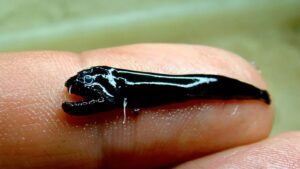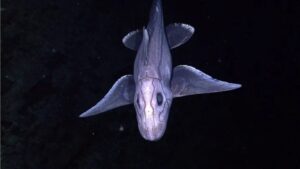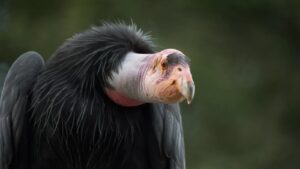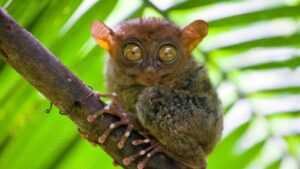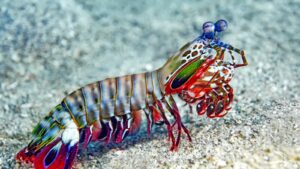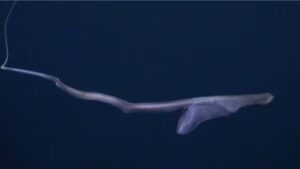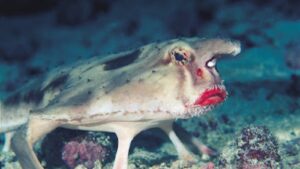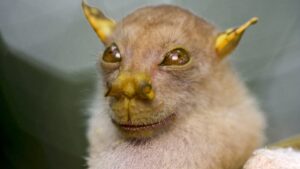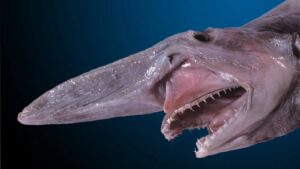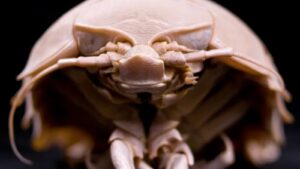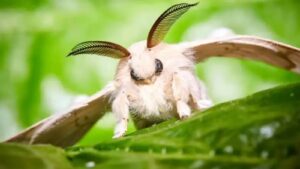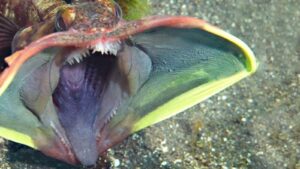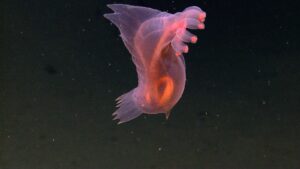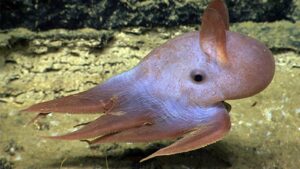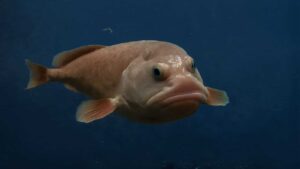Top 20 Alien-Looking Animals That Actually Exist
Summary
Top 20 Alien-Looking Animals That Actually Exist .We are always curious to know about alien life. Our knowledge about aliens is limited to movies and comic books. However, you will be amazed to know that there are some star citizens […]
Top 20 Alien-Looking Animals That Actually Exist .We are always curious to know about alien life. Our knowledge about aliens is limited to movies and comic books. However, you will be amazed to know that there are some star citizens in wildlife who look exactly like ancient aliens. Here are the top 20 alien-looking animals that actually exist.
Video: Top 20 Alien-Looking Animals That Actually Exist
Scaleless blackfish
This dangerous, alien-looking fish was discovered with several others, most of which were quickly identified as local commercial fish. The discovery of those fish was a bit surprising — researchers had previously thought that once larvae got swept so far away, into areas with less-than-ideal conditions, they were goners. Dragonfish tend to live deeper in the ocean, which is why most people never come across them. Little did they know, the larvae were thriving in their own eddies, small, circulating sections of water that typically move against the current.
Video: Top 20 Alien-Looking Animals That Actually Exist
Chimaera
The Chimera are an alien species and the main antagonists of the Resistance series. But the animal Chimaera has elongated, soft bodies, with a bulky head and a single gill opening. They grow up to 150 cm in length, although this includes the lengthy tail found in some species. In many species, the snout is modified into an elongated sensory organ. Like other members of the class Chondrichthyes, chimaera skeletons are constructed of cartilage. Their skin is smooth and naked, lacking placoid scales, and their color can range from black to brownish gray. For defense, most chimaeras have a venomous spine in front of the dorsal fin. They use these fins to “fly” through water.
California condor
This alien-looking animal, the condor, is a uniform black with the exception of large triangular patches or bands of white on the underside of the wings. It has gray legs and feet, an ivory-colored bill, a frill of black feathers surrounding the base of the neck, and brownish-red eyes. [22] The juvenile is mostly a mottled dark brown with blackish coloration on the head. It has mottled gray instead of white on the underside of its flight feathers. When in flight, condors move remarkably gracefully. The lack of a large sternum to anchor their correspondingly large flight muscles restricts them to being primarily soarers.
Puppy-face caterpillar
The green of the body contrasts against its dark anterior and posterior, which, along with the skirt of the body, contain tubercles with hollow spines that, when broken, release an irritating toxin into predators. Like others in the family Limacodidae, they rely on their slug-like anatomy to move. Similar to a slug, Acharia stimulea uses suckers and mucus to help them roll and adhere to surfaces. After pupation, the adult Acharia stimulea loses all of its vibrant coloring and develops velvety dark brown anterior wings and cream posterior wings.
Tarsius
The fur is thick, silky, and colored gray to dark brown. The tail is scaly on the underside like a rat’s; in most species it has an edging or terminal brush of hair. Enormous eyes and padded digits are adaptations that evolved in the tarsier, a nocturnal arboreal primate of the rainforests of Southeast Asia. These alien-looking predators include small carnivores, predatory birds such as owls, and people. To protect themselves, they hide in burrows. For the past 45 million years, tarsiers have inhabited rainforests around the world, but now they exist on only a few islands in the Philippines, Borneo, and Indonesia.
Mantis shrimp
The eyes of this alien-looking animal are mounted on mobile stalks and can move independently of each other. They are thought to have the most complex eyes in the animal kingdom and have the most complex visual system ever discovered. Compared with the three types of photoreceptor cells that humans possess in their eyes, the eyes of a mantis shrimp have between 12 and 16 types of photoreceptor cells. Furthermore, some of these shrimps can tune the sensitivity of their long-wavelength color vision to adapt to their environment. This phenomenon, called “spectral tuning,” is species-specific.
Gulper Eel
At first look, you might think it’s a strange, alien-looking creature. The gulper eel is one of the most bizarre-looking creatures in the deep sea. Its most notable attribute is the large mouth. This enormous mouth is much larger than the eel’s body. The mouth is loosely hinged and can be opened wide enough to swallow an animal much larger than itself. In fact, this eel is sometimes referred to as the pelican eel. The gulper’s stomach can also stretch to accommodate its large meals. This giant mouth gives the eel its other common name of umbrella mouth gulper.
Purple frog
The body of thepurple frog appears robust and bloated and is relatively rounded compared to other more dorsoventrally flattened frogs. Their flattened body assists them to cling to submerged rocks and boulders, which essentially helps them fight strong currents, allowing them to remain near stream banks where they typically reside. Its arms and legs splay out in the standard anuran body form. Compared to other frogs, it has a small head and an unusual pointed snout. Adults are typically dark purplish-grey in color. Males are about a third of the length of females.
Saiga
This alien creature shows seasonal changes in their color. In summer, the coat appears yellow to red, fading toward the flanks. The Mongolian saiga can develop a sandy color. Agricultural advancement and human settlements have been shrinking habitat areas of the saigas since the 20th century. Occupants limited the saiga’s passage to water resources and the winter and summer habitats. The ever-changing face of the steppe requires saigas to search for new routes to their habitual lands. Currently, saiga populations’ migratory routes pass through five countries and different man-made constructions, such as railways, trenches, mining sites, and pipelines.
Read More: Top 20 Costumes That Take Cosplay to the Next Level
Red-lipped batfish
The body color of the red-lipped batfish is light brown and a grayish color on its back, with white countershading on the underside. On the top side of the batfish, there is usually a dark brown stripe starting at the head and going down the back to the tail. The snout and horn of the red-lipped batfish are a brownish color. As the name of the fish states, the batfish has bright, almost fluorescent, red lips. The color of the squamation of the red-lipped batfish is shagreen-like with a relatively smooth texture. The bucklers are concealed by a layer of fine spinules.
Tube-nosed fruit bat
It is a species of megabat in the family Pteropodidae. It is found at islands north of Australia and in Indonesia, Papua New Guinea, the Philippines, and the Solomon Islands. The species group is generally solitary and adopts a daytime roost in dry foliage of the lower to mid-story of the forest. The reproduction is typical, a single birth once a year, and the offspring are carried by the mother until they advance to an age where they can be left behind while feeding.
Goblin shark
The goblin shark has a distinctively long and flat snout, resembling a blade. The proportional length of the snout decreases with age. The eyes are small and lack protective nictitating membranes; behind the eyes are spiracles that make it alien-like in appearance. The large mouth is parabolic in shape. The jaws are very protrusible and can be extended almost to the end of the snout, though normally they are held flush against the underside of the head. It has 35–53 upper and 31–62 lower tooth rows. The teeth in the main part of the jaws are long and narrow.
Giant Isopod
The large eyes are compound with nearly 4,000 facets, sessile, and spaced far apart on the head. They have two pairs of antennae. The uniramous thoracic legs or pereiopods are arranged in seven pairs, the first of which is modified into maxillipeds to manipulate and bring food to the four sets of jaws. These alien sea creatures have five segments called pleonites in their abdomens, each with a pair of biramous pleopods; these are modified into swimming legs and rami, flat respiratory structures acting as gills. The isopods are a pale lilac or pinkish in color.
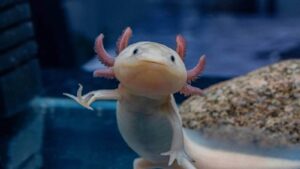
©interactiveaquariumcancun.com
Axolotl
Their heads are wide, and their eyes are lidless. Their limbs are underdeveloped and possess long, thin digits. Males are identified by their swollen cloacae lined with papillae, while females are noticeable for their wider bodies full of eggs. Three pairs of external gill stalks originate behind their heads and are used to move oxygenated water. The external gill rami are lined with filaments to increase surface area for gas exchange. Four gill slits lined with gill rakers are hidden underneath the external gills. These alien monsters have four pigmentation genes; when mutated, they create different color variants.
Poodle moth
The Venezuelan poodle moth is a moth photographed in 2009 by Kyrgyzstani zoologist Dr. Arthur Anker in the Gran Sabana region of Venezuela. The name derives from a comparison of its physical appearance to a cross between a moth and a poodle. To date, the only known examples of the Venezuelan poodle moth live in Venezuela, South America, in the Canaima National Park. The region includes diverse habitat types, including moist forests and high rock plateaus known as tepuis. Measurements derived from Dr. Anker’s photographs show the unique Lepidoptera to be about 1 in.
Sarcastic Fringehead
This species is known for the incredible display behaviors in which combating males engage when defending adjacent territories. The sarcastic fringehead is a tube blenny, so called because they live in burrows or tube-like structures created by other animals. In the case of this species, the shelters are those created by burrowing clams or by empty snail shells. Some individuals have even been observed living inside soda bottles or other manmade materials. Little is known about the feeding habits of the sarcastic fringehead, but scientists expect that the grossly oversized mouths of the males may negatively affect their ability to feed.
Hatchetfish
When fully grown, freshwater hatchetfish range in size from 1 inch up to 2 1/2 inches. One exception is the giant hatchetfish,which can grow up to 3 1/2 inches. The smallest being the dwarf hatchetfish, which only grows to about 1 inch. The most obvious trait of the freshwater hatchetfish is their enormously enlarged sternal region. This is accompanied by large pectoral fins and “extraordinarily powerful” associated muscles, which account for up to one-quarter of their total body weight. “Quick beats of the pectoral fins” allow hatchetfish to “lift themselves half out of the water and glide along the surface.
Enypniastes
Species in this genus have developed webbed, swimming fin-like structures at the front and back of their bodies, which enable them to swim up off the surface of the sea floor and to journey as much as 1,000 m up into the water column. This is thought to help the alien animals move to new feeding grounds and avoid predators. The enypniastes move using a few methods. The first is that they move their anterior veil in a rowing motion. The second is that when there is a current, the organism will use their tentacles to pull themselves downcurrent. They also move using a pushing motion with their tentacles.
Dumbo Octopus
Dumbo octopuses move by slowly flapping their ear-like fins, and they use their arms to steer. These UFO-looking creatures are foraging predators and eat pelagic invertebrates that swim above the sea floor. As there are few large predators in the deep sea, Dumbo octopuses’ primary predators are diving fishes and marine mammals, including tunas, sharks, and dolphins. Due to their preference for extreme depths, they are only very rarely captured in fishing nets and are probably not threatened by human activities. The name Dumbo octopus refers not just to one species but to an entire genus of deep-sea umbrella octopuses, noted for their fins that resemble Dumbo the elephant’s ears.
Read More: The Most BEAUTIFUL Horses in the World You Won’t Believe Exist
Blobfish
In its normal habitat, which is 2,000 to 4,000 feet underwater, the pressure there makes it look like any ordinary fish. But as it is brought up to the surface, caught in fishermen’s trawling nets, the pressure of the water decreases and the blobfish begins to lose its shape. The world’s ugliest fish is also the most delicious: a top expert says it tastes better than butter-poached lobster, but you need to blowtorch it before eating it. The blobfish was once voted the world’s ugliest animal, but a fish expert has revealed it’s actually one of the tastiest.
Which one do you think looks the most similar to aliens? Have you seen any other creature like this? Let us know in the comment section.
